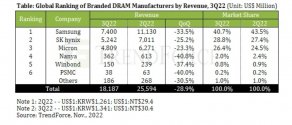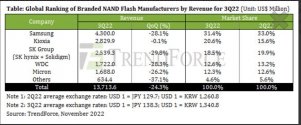Good find. By capacity in 200 mm equivalents we find a different picture - the capacity has been increasing.
They expect an expansion to 19% by 2024.
The two list represent different things:
1. like you said, Trendforce is based on revenue / Knometa is physical wafer count
2. Trendforce list is only for foundries / Knometa list is for all sectors (foundries/IDM/memory)
3. Trendforce list is based on company’s HQ location / Knometa is based on fab location
Physical wafer output does not take into account the value of the wafer (e.g. not all wafers are the same; one 7nm wafer should be worth more than one 90nm wafer). So, I’m the industry, we do look at both numbers, but the revenue number reflects the overall value and hence better for us to extract business opportunities from OpEx spending, and is a better tarting point for projecting future business opportunities from the top-down.
Chinese foundries accounting for 10% WW market share at the moment. But the WW share of DRAM, 3D-NAND, and IDM would be a lot less.
There was an ICInsight analysis that showed revenue share of all fabs in China to be ~16%, but once removing Samsung/SK Hynix/Soidgm/tsmc/UMC then that figure drops to single digit, I think it was ~6%.
Anthis, there are many different ways to analyze data or to report data that fits our narrative. Looking at the Knometa list would make us feel we are closer to the MIC2025 target. But, a revenue ranking has been the more standard way to look at this thing. The motivation for MIC2025 is not because we import lots of chip, it’s because we spend more money importing semiconductor than oil. Motivation is to cut down on $$ semi import so we can boost the GDP. It’s all about the $$, number of wafer output is just a mean to get there.


